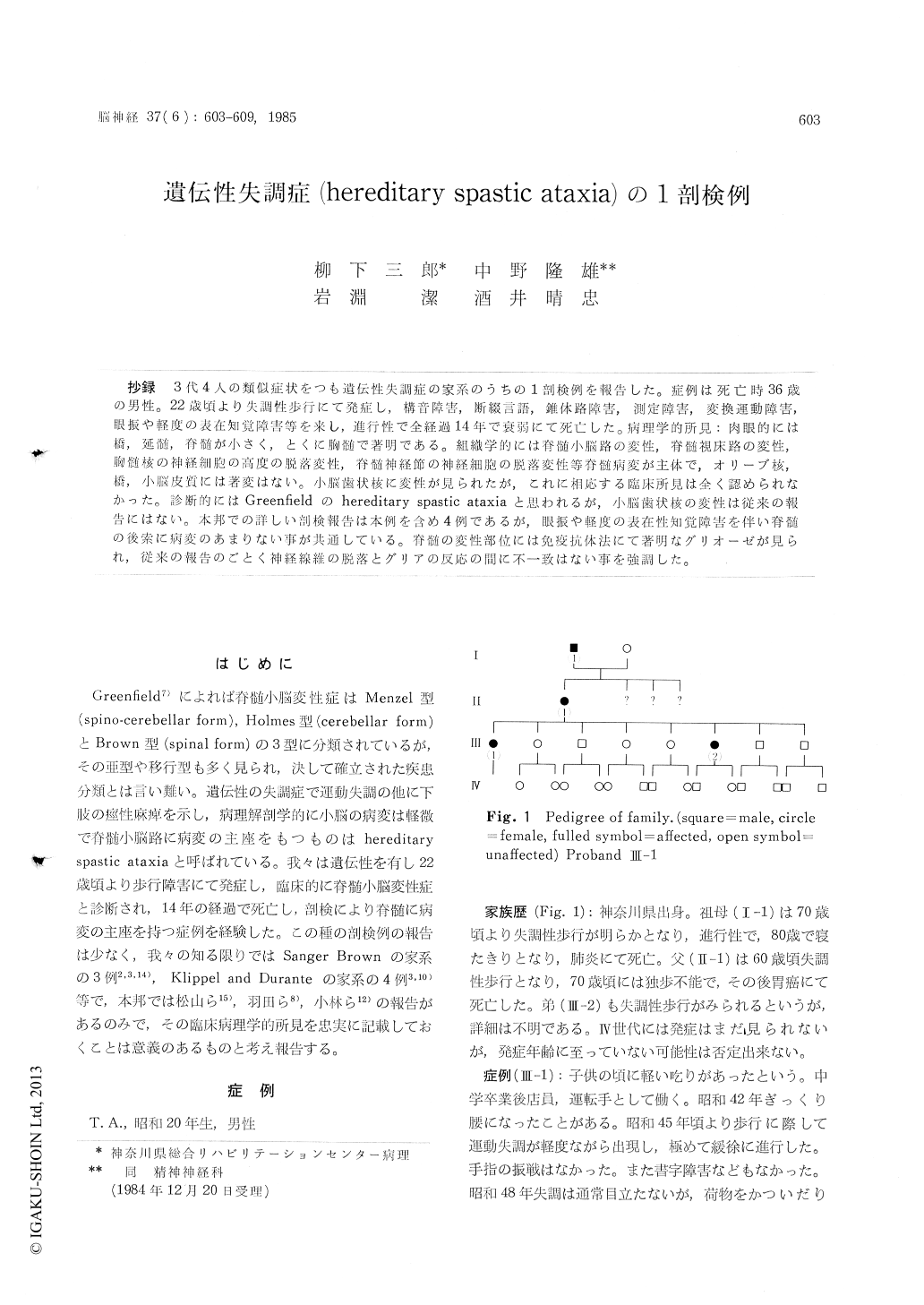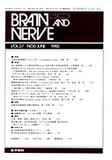Japanese
English
- 有料閲覧
- Abstract 文献概要
- 1ページ目 Look Inside
抄録 3代4人の類似症状をつも遺伝性失調症の家系のうちの1剖検例を報告した。症例は死亡時36歳の男性。22歳頃より失調性歩行にて発症し,構音障害,断綴言語,錐体路障害,測定障害,変換運動障害,眼振や輕度の表在知覚障害等を来し,進行性で全経過14年で,衰弱にて死亡した。病理学的所見:肉眼的には橋,延髄,脊髄が小さく,とくに胸髄で著明である。組織学的には脊髄小脳路の変性,脊髄視床路の変性,胸髄核の神経細胞の高度の脱落変性,脊髄神経節の神経細胞の脱落変性等脊髄病変が主体で,オリーブ核,橋,小脳皮質には著変はない。小脳歯状核に変性が見られたが,これに相応する臨床所見は全く認められなかった。診断的にはGreenfieldのhereditary spastic ataxiaと思われるが,小脳歯状核の変性は従来の報告にはない。本邦での詳しい剖検報告は本例を含め4例であるが,眼振や軽度の表在性知覚障害を伴い脊髄の後索に病変のあまりない事が共通している。脊髄の変性部位には免疫抗体法にて著明なグリオーゼが見られ,従来の報告のごとく神経線維の脱落とグリアの反応の間に不一致はない事を強調した。
An autopsy case of hereditary spastic ataxia is reported. There are four family members with similar symptomatology through three genera-tions.
A 36-year-old man developed atactic gait at the age of 22 years, with following dysarthria,scanning speech, pyramidal signs, dysmetria, dysdiadochokinesia, nystagmus and mild sensory disturbance. The clinical course was steadly progressive and terminated about 14 years after the onset.
The gross examination showed smallness of the brain stem and spinal cord with marked symmetrical atrophy of the anterior and lateral columns, especially at thoracic level. Histolo-gically, pronounced degeneration was found in the anterior and posterior spino-cerebellar tracts, spino-thalamic tracts, and spinal ganglia. The olivary nuclei, pons and cerebellum were spared. The dentate nuclei showed considerable loss of neurons with grumose degeneration, however there were no clinical signs related to this pathology.
This case is considered to fall in the groupof hereditary spastic ataxia according to Green-filed's classification, however, there was no re-port on degeneration of the dentate nucleus in this disease for the present.
Herditary spastic ataxia is very rare disease and only four cases have well been documented in our country to the best of our knowledge. The presence of nystagmus and superficial sen-sory disturbance, and sparing of the posterior colum of the spinal cord seems to be common clinico-pathology in Japanese cases, differing from those of foreign cases.
The fact that reactive astrogliosis was im-munohistochemistrically demonstrated in the de-generative regions of the spinal cord and there is no discrepancy between degenerative and re-parative processes as reported before is stressed.

Copyright © 1985, Igaku-Shoin Ltd. All rights reserved.


